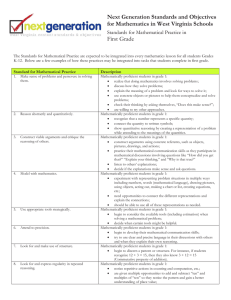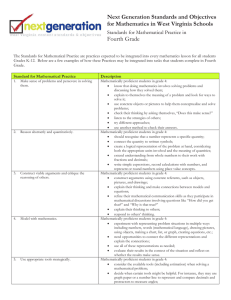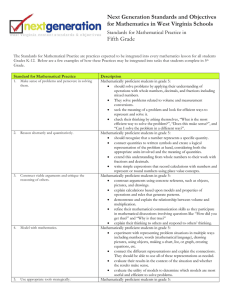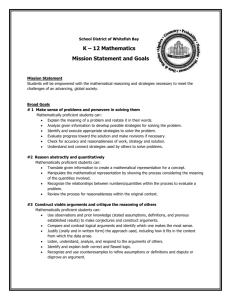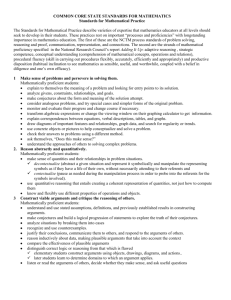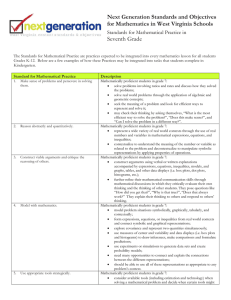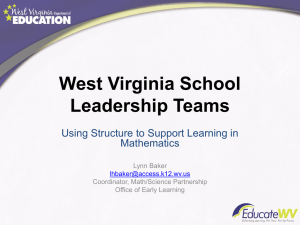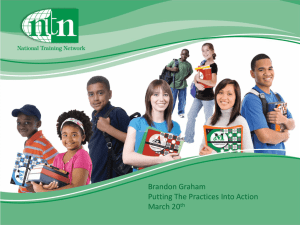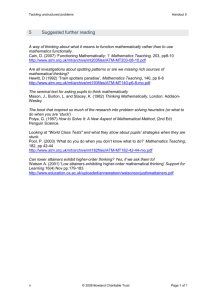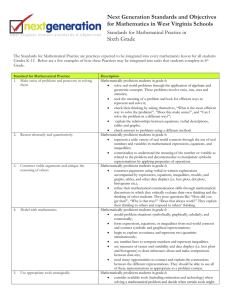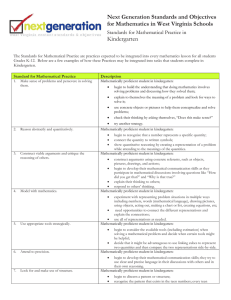Next Generation Standards and Objectives for Mathematics in West Virginia Schools
advertisement
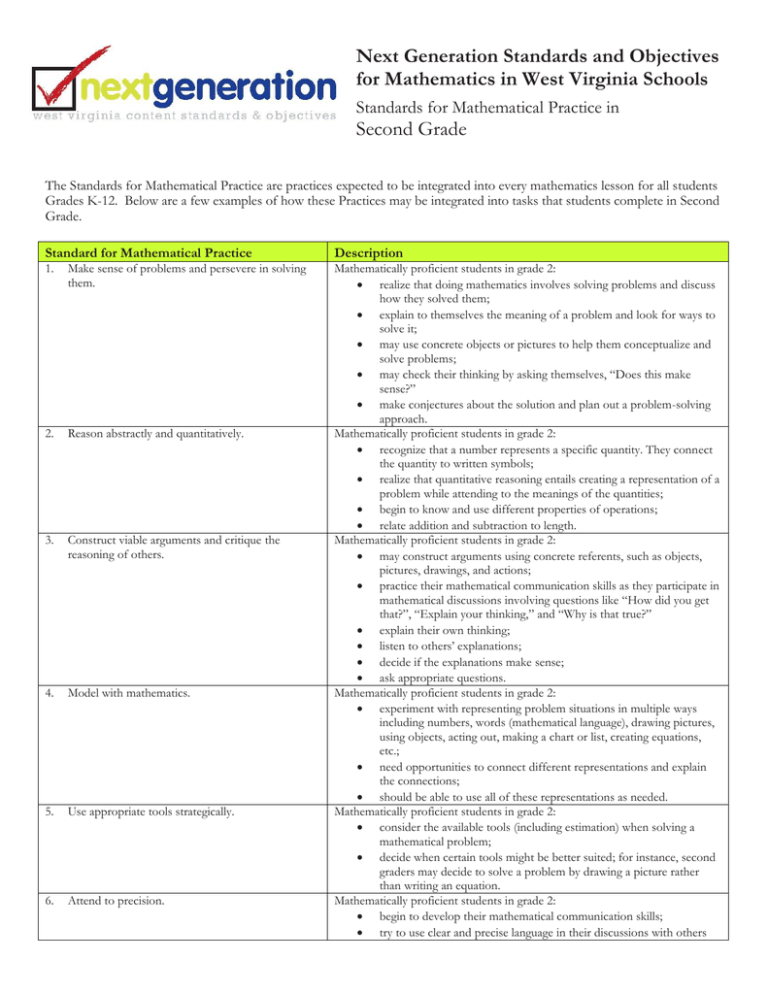
Next Generation Standards and Objectives for Mathematics in West Virginia Schools Standards for Mathematical Practice in Second Grade The Standards for Mathematical Practice are practices expected to be integrated into every mathematics lesson for all students Grades K-12. Below are a few examples of how these Practices may be integrated into tasks that students complete in Second Grade. Standard for Mathematical Practice Description 1. Make sense of problems and persevere in solving them. 2. Reason abstractly and quantitatively. 3. Construct viable arguments and critique the reasoning of others. 4. Model with mathematics. 5. Use appropriate tools strategically. 6. Attend to precision. Mathematically proficient students in grade 2: realize that doing mathematics involves solving problems and discuss how they solved them; explain to themselves the meaning of a problem and look for ways to solve it; may use concrete objects or pictures to help them conceptualize and solve problems; may check their thinking by asking themselves, “Does this make sense?” make conjectures about the solution and plan out a problem-solving approach. Mathematically proficient students in grade 2: recognize that a number represents a specific quantity. They connect the quantity to written symbols; realize that quantitative reasoning entails creating a representation of a problem while attending to the meanings of the quantities; begin to know and use different properties of operations; relate addition and subtraction to length. Mathematically proficient students in grade 2: may construct arguments using concrete referents, such as objects, pictures, drawings, and actions; practice their mathematical communication skills as they participate in mathematical discussions involving questions like “How did you get that?”, “Explain your thinking,” and “Why is that true?” explain their own thinking; listen to others’ explanations; decide if the explanations make sense; ask appropriate questions. Mathematically proficient students in grade 2: experiment with representing problem situations in multiple ways including numbers, words (mathematical language), drawing pictures, using objects, acting out, making a chart or list, creating equations, etc.; need opportunities to connect different representations and explain the connections; should be able to use all of these representations as needed. Mathematically proficient students in grade 2: consider the available tools (including estimation) when solving a mathematical problem; decide when certain tools might be better suited; for instance, second graders may decide to solve a problem by drawing a picture rather than writing an equation. Mathematically proficient students in grade 2: begin to develop their mathematical communication skills; try to use clear and precise language in their discussions with others 7. Look for and make use of structure. 8. Look for and express regularity in repeated reasoning. and when they explain their own reasoning. Mathematically proficient students in grade 2: look for patterns; for instance, they adopt mental math strategies based on patterns (making ten, fact families, doubles). Mathematically proficient students in grade 2: notice repetitive actions in counting and computation, etc.; look for shortcuts, such as rounding up and then adjusting the answer to compensate for the rounding; continually check their work by asking themselves, “Does this make sense?”
